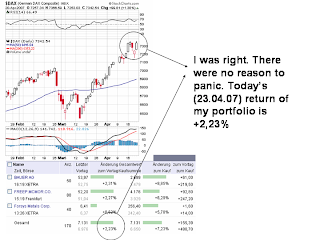SWOT analysis is a powerful technique to analyse the strengths, weakness, opportunities, and threats of a company. Therefore it is also an important tool for the equity analysis and for the research documents. But which questons can we ask to analyze each 4 items easly? Here are some questions that you can ask.
STRENGTHS1. Does the company have a high level of competence?
2. Does the company have competitive skill?
3. Is the company ahead on the experience curve?
4. Does the company have adequate financial resources?
5. Does the company have a good reputation with buyers?
6. Is the company an acknowledged market leader?
7. Does the company have well-conceived functional area strategies?
8. Does the company have access to economies of scale?
9. Is the company somewhat insulated from strong competitive pressures?
10. Does the company have proprietary technology?
11. Does the company have better advertising campaigns than the competition?
12. Is the company good at creating new products?
13. Does the company have strong management?
14. Does the company have superior technological/technical skills?
15. Does the company have cost/pricing advantages?
WEAKNESS1. Does the company have no clear strategic direction?
2. Are the company facilities obsolete?
3. Is the company lacking managerial depth and talent?
4. Is the company missing some key skills or competencies?
5. Does the company have a poor track record in implementing strategy?
6. Is the company plagued with internal operating problems?
7. Is the company falling behind on Research & Development.
8. Does the company have a narrow product line.
9. Does the company have a weak market image.
10. Does the company have below average marketing skills.
11. Is the company unable to finance needed strategy changes.
12. Does the company have higher overall costs relative to our key competitors.
13. Does the company have subpar profitability.
OPPORTUNITIES1. Is there additional customer groups that we could serve.
2. Is there new markets or market segments to enter.
3. Can the company expand our product/service line to meet customer needs.
4. Can the company diversify into related products.
5. Can the company control sourcing or supply activities (vertical integration.)
6. Are falling trade barriers opening foreign markets to the company.
7. Are rivals of the company becoming complacent.
8. Is the market growing faster than in the past.
9. Will Fewer regulatory requirements making doing business easier for the company.
THREATS1. Are Low-cost foreign competitors entering the market.
2. Are sales of substitute products rising.
3. Is the market growing more slowly than expected.
4. Are there adverse shifts in foreign exchange rates and/or trade policies.
5. Are regulatory requirements becoming onerous.
6. Is the company vulnerable to changes in the business cycle or to recessions.
7. Are the company's customers and/or suppliers enjoying growing bargaining power.
8. Are buyers’ needs and tastes changing in directions that point away from our current expertise.
9. Are demographic changes having a negative impact on business.
10. Is It easy to enter this industry (very low barriers to entry).
11. Could Technology change this industry with little or no warning.
Sources:
- http://www.mindtools.com/pages/article/newTMC_05.htm
- THE CONSULTANT’S TOOLKIT, Mel Silberman, page 4









